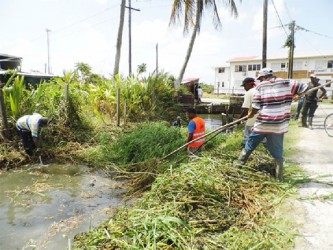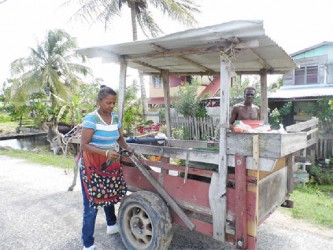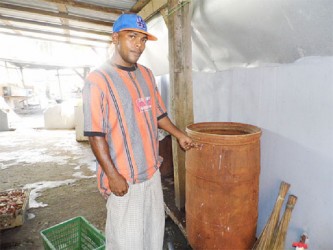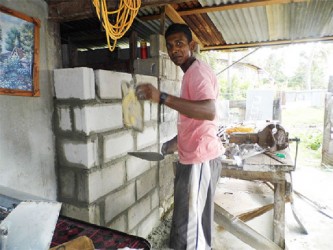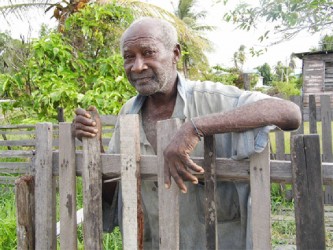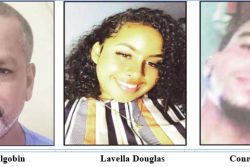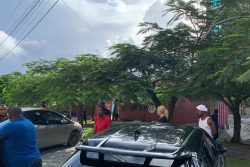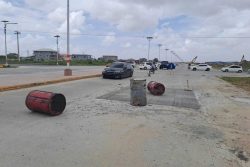Story and photos by Jannelle Williams
Number 2 Village is perhaps one of the most prosperous villages in East Canje Berbice as a large percentage of its residents are involved in private enterprise. Approximately 50% of them are self-employed, creating employment for themselves in a time when there is a dearth of job opportunities in the country. Thus, the village is a hub for economic activities in East Canje. There are numerous shops, groceries and parlours. In addition to this are a diner, lumber yard, two Chinese restaurants, a construction firm, a general store, car dealership, car and bus rental, trucking service, furniture establishment, night club, three internet cafes, supermarket and herbs store to name a few of the economic activities in the village.
When Sunday Stabroek visited the village, proprietrix Sharmattie Anantram was overseeing her Crab business. The 41-year-old woman said that the business has been in her family for generations and went on to reveal that three branches of the family are currently operating crab businesses in the village. “Like fourteen years now we get the crab business but it’s been in the family for years. We buy the crab from the crab men and we clean it and sell the meat to restaurants and even export some,” she said. Anantram admitted that though smelly, the crab business is a profitable one as it provides a livelihood for dozens of persons since they “buy hundreds and hundreds of pounds of crab everyday to clean” and employ on average five to fifteen persons daily to do the cleaning.
Most of the persons employed by Anantram are single parent mothers, out of school youths and women just seeking to occupy their days and earn an honest living in the process.
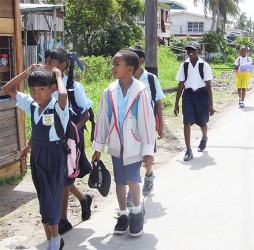
When asked about life in Number 2 Village, Anantram said she likes living there even though it doesn’t have much in terms of social activities or sources of entertainment and that the only thing they can do in the village is watch television and converse.
While highlighting the need for better drainage as one of her recommendations for improvement in the village, Anantram said what needs to be urgently addressed is the apparent disinterest shown by the police to tackle crime in the village. “Sometimes we get a problem in here and the police don’t come,” she stated. The woman explained that the village and her family in particular have had a spate of robberies over the past few years and no response from the police when summoned. “We get robberies all the time. You know how much time we get robbed and we keep calling for the police and they don’t come,” she lamented. “They [the robbers] shoot up we house and everything and the police don’t come, they does tell we they coming and they never come,” she said as she insisted that the “police need to respond when called.”
Thirty-six-year-old Anand Ramjass who is employed by Anantram and has lived in Number 2 Village on and off for two decades, described the village as peaceful, but criticized the quality of potable water provided by GWI. “It’s basic that every human should have clean water and stuff,” he began before turning on the tap to reveal the quality of the village receives. “As soon as you turn on the pipe system is red water!” he exclaimed. “They got squatting areas like Cow Dam [Angoy’s Avenue] that are not even residential that the government affords them with purified water, and we in Number 2 who way more established getting red water,” he cried in exasperation.
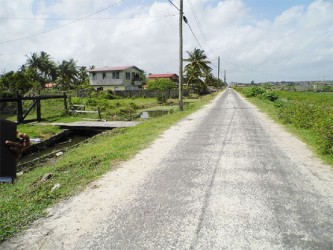
Turning his attention to other areas of the village that need improving Ramjass said there is a need for a vibrant and active Neighbourhood Policing Group. “If you watch at the back here they got a lot of people who got cows, sheep, goats, pigs. This area is mostly private enterprise, and when people are involved in large-scale farming and cattle rearing and you got a lot of rogue elements that want steal, you got to get security and protection,” he declared.
A walk through Second Street, formally known as Behaspat Street, found a welding and bicycle repair shop, where a few youths were trying to occupy themselves meaningfully by learning the trade. Meanwhile, 19-year-old Amarnauth Narassiah who was the eldest at the workshop was wrist deep in cement plastering a concrete wall he had erected to extend his family’s home. He told Sunday Stabroek there isn’t much to do in the village and that playing cricket and hanging out in similar settings is pretty much what they do to while the time away. “We don’t do anything fun in Number 2. There is nothing to do. I and my neighbours play cricket and that’s it,” he said shrugging. Narassiah suggested better roads, a playground and jobs for the youths as things the village needs. “The place
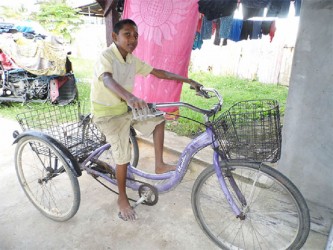
wants more investments, more businesses and a training centre to instruct youths,” he added.
Narassiah’s neighbour, 47-year-old Haytaishwar Bissoondyal, who is a native of Number 2 Village, is content with the way the village is. Listing the reasons he enjoys living in the village of his birth, he said “the place is quiet and peaceful; you enjoy living around your neighbours and everything is just the same, nothing change.”
While content with the status quo, Bissoondyal said the village could be better if “people play their part and keep their surroundings clean”. Elaborating, he said “I dig my drains, but my neighbours might not do theirs so eventually it will leave that way.” He pointed out that “in places like Canefield and Gangaram [both in East Canje], people do their things themselves and don’t depend on the
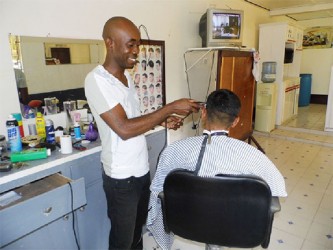
NDC” and criticized his neighbours for “looking at the NDC to do everything.” Bissoondyal stated that “people need to be more open minded: not because you paying your taxes you won’t do anything. Have more respect and love for your environment.”
The demographics of the village appears to be evenly distributed: there is a mixture of Indian and African Guyanese and religions and the ages of the residents range from a few days old baby to a 103-year-old lady. However, there appears to be a disagreement between the older generation who were born and bred in the village and the younger generation who migrated into the village.
Seventy-eight-year-old Edmund Montague Morian, fondly known as Neighbour Mory, described the village as bad and said he cannot comprehend how it has turned into one of “detachment and disassociation. I am not living properly here.” Neighbour Mory explained that when he leaves his house to go and collect his pension persons always invade his premises and steal from him. “They
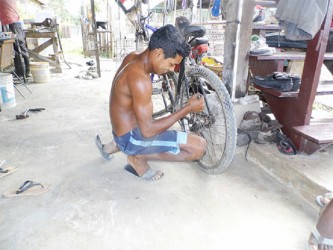
always thieving out my things and robbing me all the time.” He revealed that he once intercepted the vandals and was “choked in my house and is neighbour Derek who had to save me about five years ago.”
The former security guard, tailor and poet went on to say “this is the worse life in my career” and that he longs for the “good old days when people were each other’s keepers and cared for one another.” What is needed in the village, he said, is for people to “live more up to date with each other and be friendlier.”
In contrast, 35-year-old Bertram Garnett, who is a barber by profession wishes his neighbours would mind his business a little less. Garnett has lived in Number 2 for over a decade, and said the village is quite lovely but has “nuff talk name.” This he believes is the only insufferable thing in the village. “It alright, is just some people they like snoop in your business; we have some noisy neighbours,” he
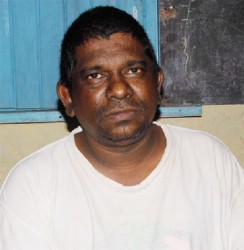
stated. Clarifying his statement, Garnett said “they are nice people, is just that they got their ways.” But this is not necessarily a bad thing he admitted, since it makes them very progressive. “They like peep over and see what you doing and stuff; if they see you do something – build fence, paint house, buy car and all those things they run and do it.”
Other aspects of village life need improving he added. “We getting water and light, but we need better drainage systems and we need something for the youths.” He noted that all there is for the youths to do in the village is “mine bird and play cricket. They don’t have a playground in this place.” Garnett suggested that “at least every community suppose to get a playground,” and Number 2 Village “needs a counselling centre for the youths to educate them about sex, and AIDS and those things.”
Sisters Lynette and Loretta Rooney, ages 66 and 63 years respectively, were trying to cope with the loud music blasting from the stereos of a neighbour. They have lived most of their lives in Number 2 Village, and now spend their time split between living in the village and Georgetown. They complained about the constant noise nuisance in the village and the police’s apparent unwillingness to address the issue properly.
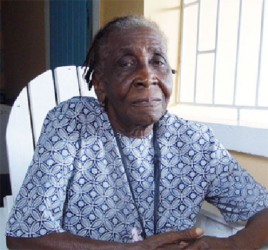
“Is noise all day and I call the police plenty times but they want the telephone numbers of those making the noise to call them but I don’t know the numbers,” said Lynette. It was Loretta who explained that “these are new people in the village, in the sense that they weren’t born in the village but they been living here for quite a while now, so we don’t really know them.”
Both sisters indicated that “now different from long ago, because now we don’t know who living here; there are a set of strange people coming into the village. But before time, when we were growing up it was small population and everybody knew everybody.”
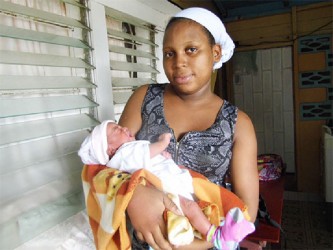
The village was once characterized as peaceful, warm and welcoming, but now the Rooneys believe the village is known for “too many rum drinking, unemployment and drug smoking.”
Beryl Thomas, 83, raised 9 children in Number 2 Village and found that it was easy then compared to trying to help rear her grandchildren and great grandchildren in the village now. “Back in the days, you had help from everyone, the village was small in size and everyone was like one big family,” she said. She posited that with time things change as people are raised differently now and have different mindsets. She did however say, that she has maintained amiable relationships with all her neighbours who have come and gone. Thomas remembers the days in the 1940s and 1950s when the village was nothing more than mud dams with a few mud houses.
Now Number 2 Village has five asphalted roads, namely Lord Street, Behaspat Street, Sukhu Street, Bristol Street and the Public Road. Each of these streets is fully occupied with dozens of concrete and wooden houses.
Number 2 Village falls under the Ordnance/Fort Lands/Number 38 NDC which is run by an IMC, whose chairman lives in the village. Hiralall Goberdhan described his responsibilities as where he
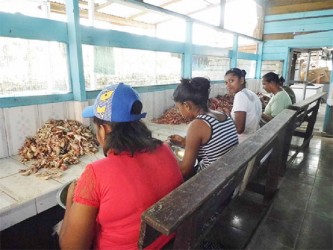
“basically carries out the instructions of the local government ministry.” He indicated that the IMC has helped to improve the lives of the villagers and in explaining the functioning of the council he said “there are councillors who look after various things. If a villager has a problem, he/she will meet a councillor and state the problem and at a
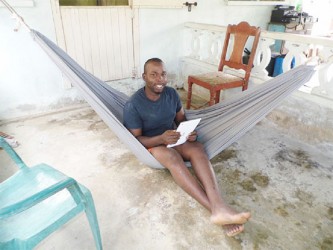
council meeting the matter would be raised.” The issue would then be forwarded to the Regional Democratic Council for a solution or resolution.
Goberdhan stressed that the “village has undergone plenty changes over the years; we have seen continuous progress as the years go by” and pointed to the streets as one such example. He said, too, “Everything else is ok, [but] the drains will always be clogged with our garbage and need to be cleaned.”
